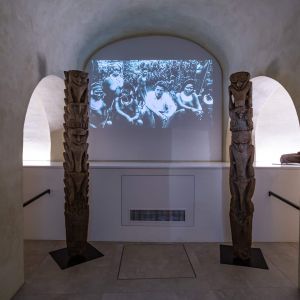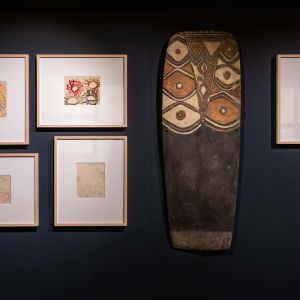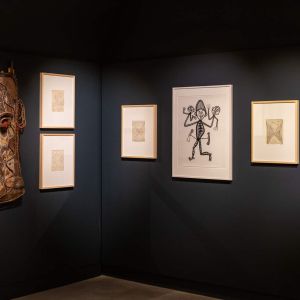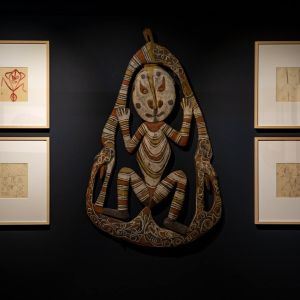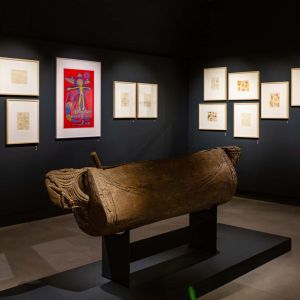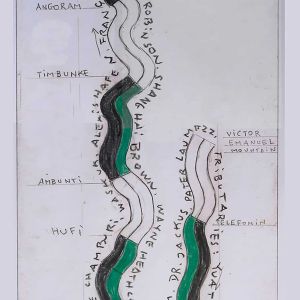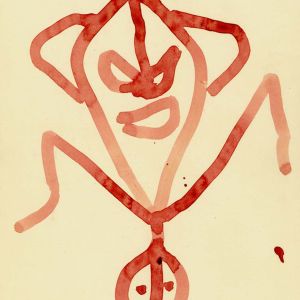VILLA MALPENSATA – SPAZIO MARAINI
The temporary exhibition is the tenth episode of the Museum of Cultures’ successful Dèibambini cycle, which took place at the Heleneum (MUSEC’s previous home) between 2006 and 2014. The move of MUSEC to Villa Malpensata marked an interruption of the original project, but at the same time stimulated a critical rethinking of its procedures. Without abandoning the idea of conceiving the museum as a privileged place for the generation of ‘virtual universes’ on a child’s scale, a new starting point was created: the works of children’s art of the past, to be taken as a starting point and template for the thematic elaboration of expressive grammars. The idea is to build a bridge between yesterday and today, through the in-depth exploration of the expressive contents of specific and timely experiences of children’s creativity. Contents that not only interconnect cultures with a formidable and substantial unity, but have served as an inexhaustible source for the renewal of artistic languages in the 20th century. There are 79 drawings of children from New Guinea on display, all made between 1952 and 1953. Accompanying the children’s drawings are 7 silkscreens on paper from the Weltkulturen Museum in Frankfurt am Main made by Timothy Akis (c. 1944-1984) and Mathias Kauage (c. 1944-2003), two Papua New Guinean artists who belong to the generation of the young artists featured in the exhibition, and 11 works of ethnic art from the Sepik from MUSEC’s Brignoni Collection. The ethnic art works are exhibited both in the Spazio Maraini, accompanying the children’s drawings, and in the Spazio Tesoro, together with a video interview with Dadi Wirz conducted at the end of 2021 by Moira Luraschi and Paolo Maiullari, MUSEC researchers.
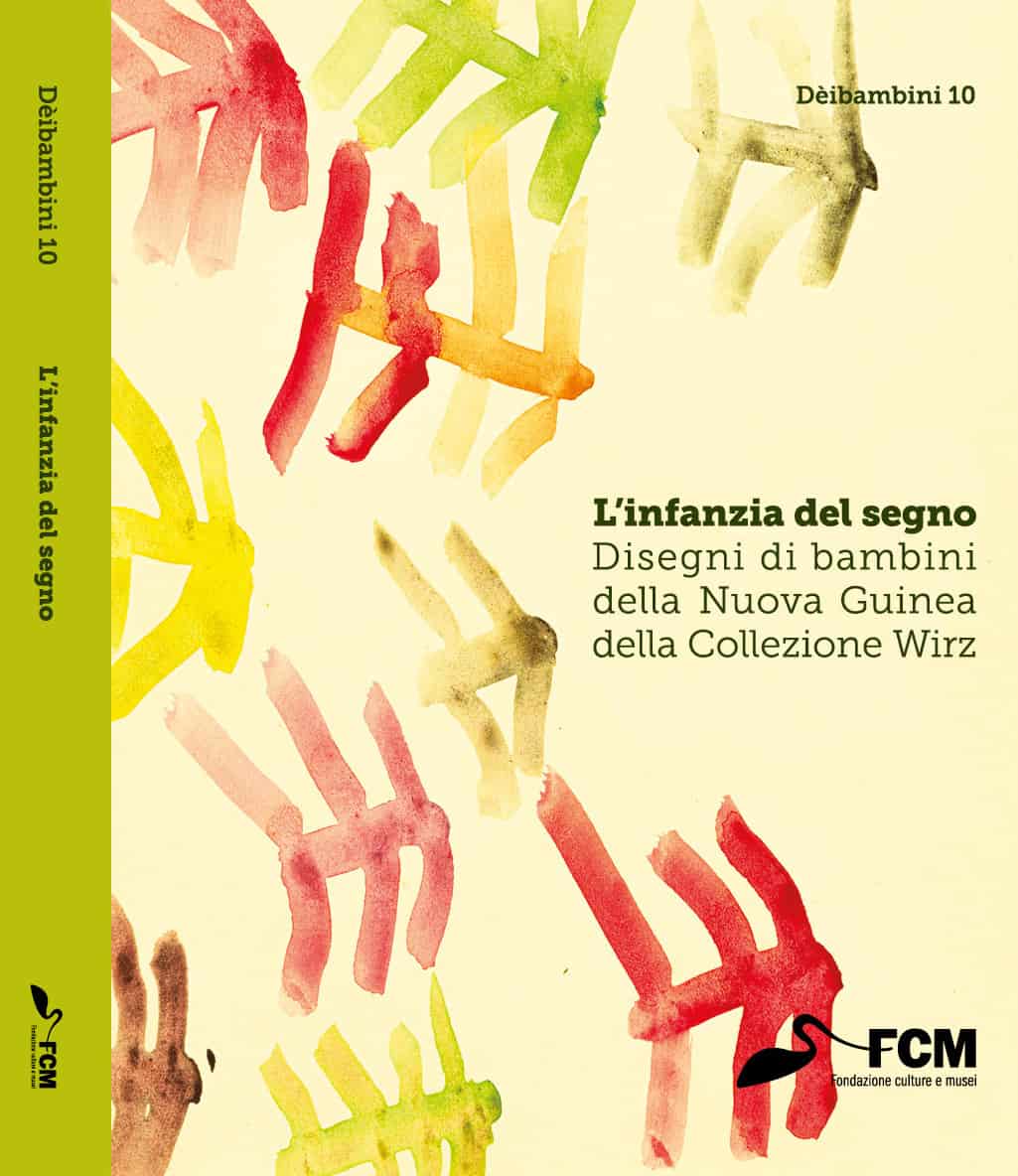
How the project ‘The Childhood of the Sign’ came into being
In 1952, Swiss artist Dadi Wirz (b. 1931) embarked on a journey to New Guinea with his father Paul, one of the 20th century’s most famous ethnologists and collectors. Following a project based on some early post-war educational theories, Dadi gives pencils and paints to the children he meets in the villages, collecting hundreds of drawings over the course of a year. He notes on the back of the sheets the name of the author and, in several cases, also the presumed age and village of origin. The result is a collection that is unique in the world, 229 children’s drawings that constitute an extraordinary document for questioning our way of seeing childhood and interpreting the profound reasons for creativity.
The drawings were preciously kept by the artist until 2020, when he donated them to MUSEC, which ensured their restoration and preservation according to modern museological principles. The works show basic shapes recurring in all children’s graphic production, such as the circle, the square, the triangle and the spiral. Signs, however, that seem to acquire original meanings in relation to the specific visual and cultural context of origin.
With the aim of restoring the deeper value of the graphic system of the ‘Wirz children’, Anna Castelli and Isabella Lenzo Massei’s curatorial project proposes a comparison, not only visual and emotional, with two different artistic genres. On the one hand, traditional sculptures from the Sepik River area (where many of the young artists lived), which link the discourse back to its historical sources. On the other hand, works by New Guinean artists, through which the significance of the children’s drawings can be assessed in relation to the contemporary art of the island, which reworks forms of the iconographic tradition and narrates the complex cultural interaction between the natives of New Guinea and the West.
The collector
Dadi Wirz was born in Basel in 1931; he spent his childhood and youth in a continuous wandering, alongside his father Paul, one of the 20th century’s most famous ethnologists, travellers and collectors. In the 1940s, partly to escape the war climate, he lived for a long time in South America, Sri Lanka and the Dominican Republic.
After obtaining a Swiss federal licence as a photographer, in the early 1950s Wirz attended the Académie André Lhote in Paris, where he got to know Calder, Ernst, Giacometti and Arp, among others.
At the end of 1952, in his early twenties, he accompanied his father on a long journey through New Guinea. From here, in 1954, he moved to Brazil, in search of new languages that could stimulate his creative experience. After his father’s death in 1955, Wirz decided to make a second and even more demanding research trip to New Guinea, feeling an urgent need to get to know and portray a world whose imminent twilight he perceived.
The ‘Dèibambini’ project was founded in 2005 as a platform for interaction between the museum and the school. In its first ten years, the project allowed children to engage with different themes, with the aim of increasing their awareness of their own potential and inner vision and strengthening their ability to interpret the world. Since 2022, the starting point has been the works of children from the past. The idea is to build a bridge between the children’s creativity of yesterday and today, through the in-depth exploration of expressive content that not only interconnects cultures, but has served as an extraordinary source for the renewal of artistic languages in the 20th century. A solid bridge, full of poetry, to connect the generations.


